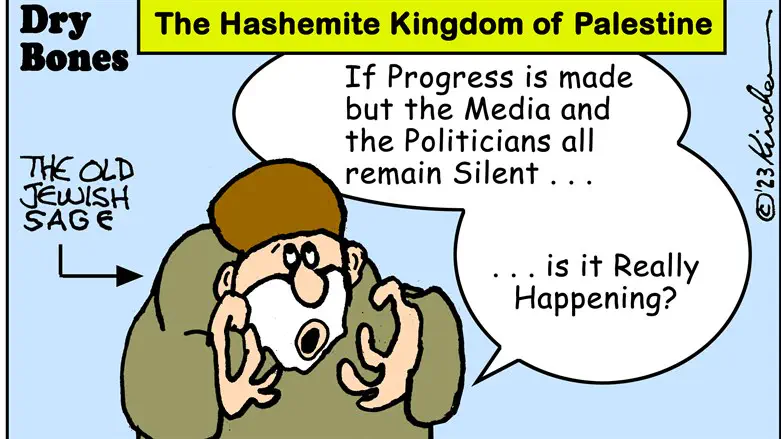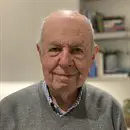
Indications that a new-two state solution - Israel and the Hashemite Kingdom of Palestine – continues to progress towards its successful implementation - were in evidence again this past week.
The demise of the two-state solution dominating the political discourse for the last 30 years – creating a new Palestinian Arab State between Israel and Jordan – was summed up beautifully by veteran New York Times Opinion Columnist Thomas Friedman, not known for his love of the Jewish State, last December:
“A week of reporting from Israel and the 'West Bank' has left me feeling that the prospect for a two-state solution has all but vanished. But no one wants to formally declare it dead and buried — because categorically ruling it out would have enormous ramifications. So, diplomats, politicians and liberal Jewish organizations pretend that it still has a faint heartbeat. I do as well. But we all know that the two-state option is not in a hospital. It’s in hospice. Only a miracle cure could save it now.”
Friedman has surprisingly failed to consider a new plan to replace it - published on 8 June 2022 and emanating from Saudi Arabia: Merging Jordan, Gaza and part of Judea and Samaria ('West Bank') into one new territorial entity to be called the Hashemite Kingdom of Palestine.
This new entity will be governed by the current Hashemite rulers of Jordan and have its capital in Amman – not Jerusalem.
Friedman’s attitude is very puzzling since it was Friedman who first brought the 1993 two-state solution to the West from Saudi Arabia in an Op Ed article he wrote in the New York Times on 17 February 2002 headlined An Intriguing Signal From the Saudi Crown Prince
Instead Friedman, as usual, has concluded that the “most likely outcome “of the demise of the 1993 two-state solution will be:
“ a total mess that will leave Israel no longer being a bedrock of stability for the region and for its American ally, but instead, a cauldron of instability and a source of anxiety for the U.S. government.”
The following developments during the past week indicate Friedman has got it completely wrong - as implementation of the Saudi-based 2022 Hashemite Kingdom of Palestine solution – begun on 24 January with Israeli Prime Minister Benjamin Netanyahu’s surprise visit to Jordan’s King Abdullah - continues to take root:
Abdullah and US Vice President Kamala Harris met in the White House but made no mention of their countries' joint affirmation of the 1993 two-state solution.
Abdullah met with representatives of international and US Jewish organisations in Washington when he again failed to affirm his support for the 1993 two-state solution.
Netanyahu discussed with investors during his three-day visit to Paris the possibility of building a network of underground highway systems across Judea and Samaria ('West Bank') to enable the maintenance of territorial contiguity for both Israeli communities and Palestinian Arab towns.
Friedman is in good company – as the United Nations, international media, analysts and think tanks continue to fail to even acknowledge the existence of the 2022 two state solution.
I asked 124596 members of the International Relations (IR) & Affairs Group and 6492 members of the International Relations and Diplomacy Group on Linked In this identical question:
Have any members of this group published an analysis of the Saudi-based Hashemite Kingdom of Palestine solution published on 8 June 2022?
Their total silence has been deafening.
The High Court of Justice’s refusal to grant Israel’s Government a four month’s extension to formulate a plan to evacuate the illegal Khan al-Ahmar Bedouin encampment Court-ordered to be demolished in the West Bank may be just the catalyst needed to expedite the implementation of the new 2022 two-state solution.
Amazing times indeed...
Please join my Facebook Page: “Hashemite Kingdom of Palestine supporters”
Author’s note: The cartoon — commissioned exclusively for this article — is by Yaakov Kirschen aka “Dry Bones”- one of Israel’s foremost political and social commentators — whose cartoons have graced the columns of Israeli and international media publications for decades
